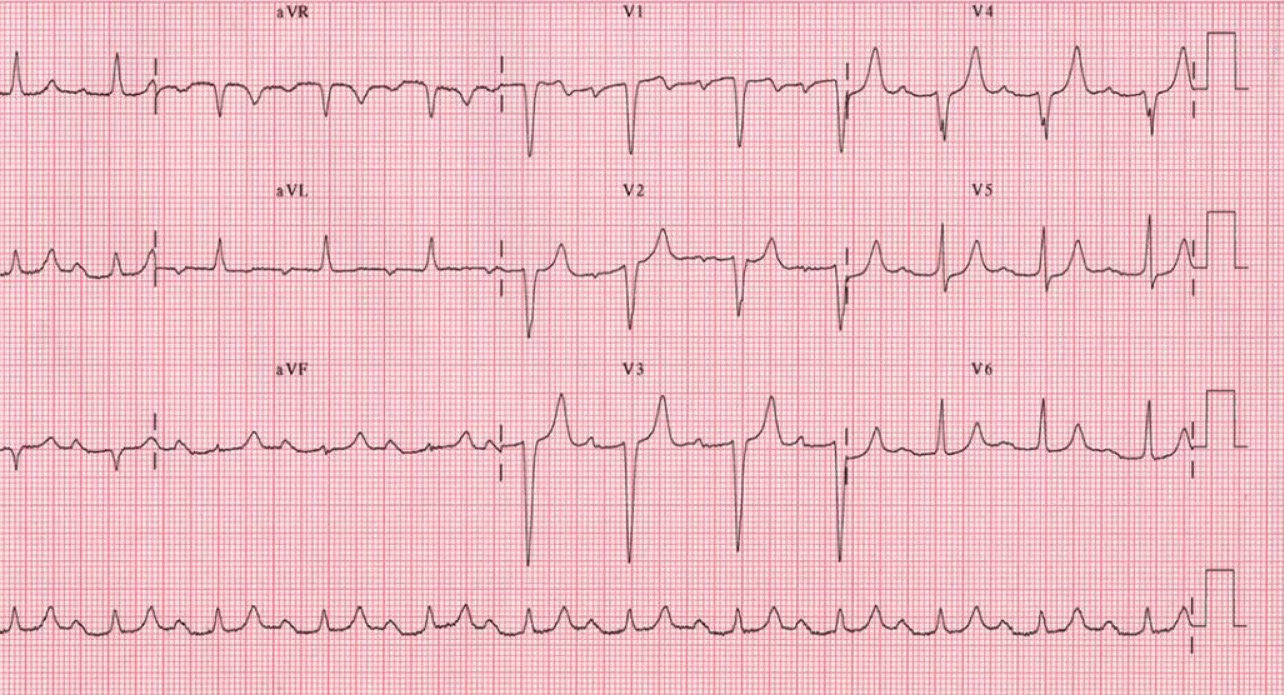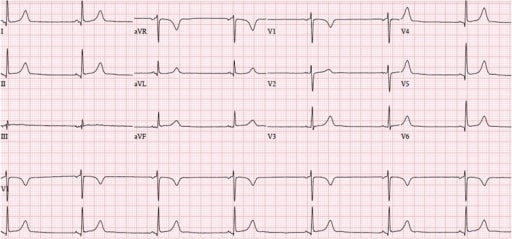Playlist
Show Playlist
Hide Playlist
Third-degree AV Blocks
-
Slides Heart Blocks.pdf
-
Download Lecture Overview
00:01 Now, third-degree heart block is called complete heart block. 00:04 Complete heart block means the P waves are not ever followed by a QRS that relates to it. 00:12 In other words, the ventricle has a subsidiary pacemaker that takes over it at a very slow rate, and often, the patients are very symptomatic. 00:21 In third-degree AV block, the wave of depolarization from the atria as I said is completely blocked and there's a subordinate pacemaker in the ventricle taking over. 00:30 There's a markedly slow heart rate. 00:33 There's a wide QRS unlike type I and type II which have narrow QRSs. 00:38 And they have wide QRSs cuz the impulse is generated in the ventricle. 00:42 And abnormally transmits through the ventricular myocardium and there's no relationship between the P waves and the QRS waves. 00:51 So, here's an example of third-degree AV block. 00:54 Notice, we start off with a QRS, then there's a P wave and there's another P wave. 01:01 And here's a QRS. Oh, and look, there's another P wave afterwards. 01:04 You'll notice these P waves are not in any relationship to the QRS. 01:09 So, in the second complex, you have what could be a normal PR interval. 01:14 But wait a minute, the next one is long and then the next one is short. 01:16 In other words, the P waves are moving at their own rhythm and the QRS is moving. 01:21 One way to tell is to determine the heartrate of the P waves. 01:25 In this case, the heartrate of the P wave is 75; that's four big boxes whereas the rate of the QRS is much slower, it's about 35 to 40.
About the Lecture
The lecture Third-degree AV Blocks by Joseph Alpert, MD is from the course Electrocardiogram (ECG) Interpretation.
Included Quiz Questions
Which of the following best describes a third-degree AV block?
- No relationship between the P waves and QRS waves
- Dropped beats that are not preceded by a change in the length of the PR interval
- Progressive lengthening of the PR interval until a beat is dropped
- Consistently prolonged PR interval (> 200 ms)
- Abnormally fast accessory conduction pathway from atria to ventricles that bypasses the AV node
Customer reviews
5,0 of 5 stars
| 5 Stars |
|
5 |
| 4 Stars |
|
0 |
| 3 Stars |
|
0 |
| 2 Stars |
|
0 |
| 1 Star |
|
0 |





